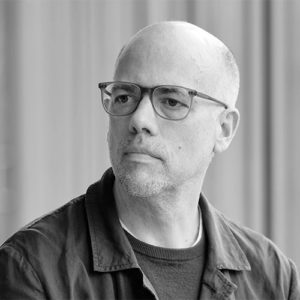It seems we can’t find what you’re looking for. Perhaps searching can help.
Open Source Strategy and Innovation in the 21st Century
In an era where the intricate web of our global systems reveals the fragility of our existence, it has become abundantly clear: the old linear models that once propelled us forward have led us to the brink of systemic collapse. Our relentless extraction of finite natural resources, coupled with the urgent need to decarbonize, underscores a pivotal truth – our current trajectory is unsustainable. To avert catastrophe and foster a thriving planet, we must radically transform our economic and social paradigms.
Syllabus
In an era where the intricate web of our global systems reveals the fragility of our existence, it has become abundantly clear: the old linear models that once propelled us forward have led us to the brink of systemic collapse. Our relentless extraction of finite natural resources, coupled with the urgent need to decarbonize, underscores a pivotal truth – our current trajectory is unsustainable. To avert catastrophe and foster a thriving planet, we must radically transform our economic and social paradigms.
As the built environment stands at the intersection of climate, society, and economy, the transition to a regenerative future demands a fundamental rethinking of how we design, engineer, build, and operate our spaces. The principles outlined in the Manifesto for a Regenerative Future – embracing complexity, fostering collaboration, and leveraging technology – require a shift in mindset and practice across all professional disciplines within the Architecture, Engineering, and Construction (AEC) sector. Professionals in the built environment must move beyond conventional, siloed approaches and adopt integrated, systems-based frameworks that prioritize sustainability, transparency, and long-term resilience.
Architects and Urban Planners: Designing for Regeneration and Adaptability Evolving from Static to Dynamic Design The traditional role of the architect as a sole creator must evolve into that of a facilitator of complex, living systems, integrating ecological, social, and technological inputs into design processes. Designs must be adaptive and resilient, responding dynamically to environmental and social changes through modular, flexible, and nature-based solutions.
Collaboration Beyond Boundaries: Architects and urban planners must move from isolated design processes to open collaboration, engaging with engineers, policymakers, and communities to ensure holistic and inclusive solutions. Participatory design methodologies that embrace transparency and collective intelligence should be prioritized, ensuring that communities are active contributors to their built environments.
Circular and Regenerative: Practices Architects must adopt circular design principles, emphasizing resource efficiency, material reuse, and waste minimization. Moving beyond sustainability, regenerative design approaches should be embedded, ensuring that built environments contribute positively to ecological and social systems over time.
The Role of Open Source in Transforming the Built Environment and Its Importance
In an era where systemic fragility and environmental crises threaten our collective future, open source emerges as a critical enabler of the paradigm shift required in the Architecture, Engineering, and Construction (AEC) sector. The transition to a regenerative and sustainable built environment necessitates a departure from proprietary, siloed approaches toward collaborative, transparent, and adaptable frameworks that embrace complexity and foster long-term resilience. Open source methodologies align perfectly with the principles outlined in the Manifesto for a Regenerative Future, providing the necessary tools and frameworks to facilitate a holistic transformation of the industry.
Why Open Source is Essential in This Context
- Enabling Systems-Based Thinking and Innovation
Open source empowers AEC professionals to integrate ecological, social, and technological dimensions into their workflows by providing access to shared knowledge, tools, and frameworks. Through collaborative design platforms, open data standards, and interoperable software, architects and urban planners can create dynamic, adaptive solutions that evolve with changing environmental and societal needs. This systems-based approach helps in moving beyond static, linear design models to more adaptive, nature-inspired frameworks. - Fostering Transparency and Collective Intelligence
The complexity of regenerative design requires multi-disciplinary collaboration and inclusivity, which proprietary systems often inhibit. Open source platforms facilitate transparent, participatory design processes that engage diverse stakeholders, including engineers, policymakers, and local communities. This openness enhances collective intelligence, ensuring that projects are more inclusive, resilient, and tailored to real-world challenges. - Accelerating Decarbonization and Circular Economy Goals
Open source solutions promote circular design principles by enabling the widespread sharing of sustainable building practices, material reuse strategies, and life-cycle analysis methodologies. Through accessible repositories of best practices and open databases on embodied carbon, AEC professionals can leverage insights that minimize waste, optimize resources, and contribute positively to ecological and social systems. - Reducing Barriers and Democratizing Access to Innovation
The traditional reliance on proprietary software and closed intellectual property models creates economic and technological barriers that limit participation and slow progress. Open source levels the playing field by providing affordable, scalable, and customizable solutions, enabling smaller firms, grassroots organizations, and developing regions to actively contribute to and benefit from sustainable innovation. - Ensuring Long-Term Resilience and Adaptability
In a rapidly evolving world, proprietary solutions often become obsolete or restrictive. Open source fosters continuous evolution and community-driven improvements, ensuring that AEC professionals can adapt their tools and methodologies to emerging challenges, from climate adaptation to smart infrastructure development. - Driving Policy Alignment and Public Good
Governments and municipalities are increasingly recognizing the value of open source in driving public sector digital sovereignty, accountability, and efficiency. Adopting open source standards and frameworks ensures that publicly funded projects align with sustainability goals, enabling better oversight, adaptability, and public engagement.
The built environment must embrace open, collaborative, and regenerative approaches to address the challenges of climate change, resource depletion, and social equity. Open source provides the technological and cultural foundation for this transition, offering a shared platform for innovation, inclusivity, and resilience. By embedding open source into AEC workflows, professionals can create thriving, adaptable, and sustainable spaces that contribute positively to both people and the planet.



